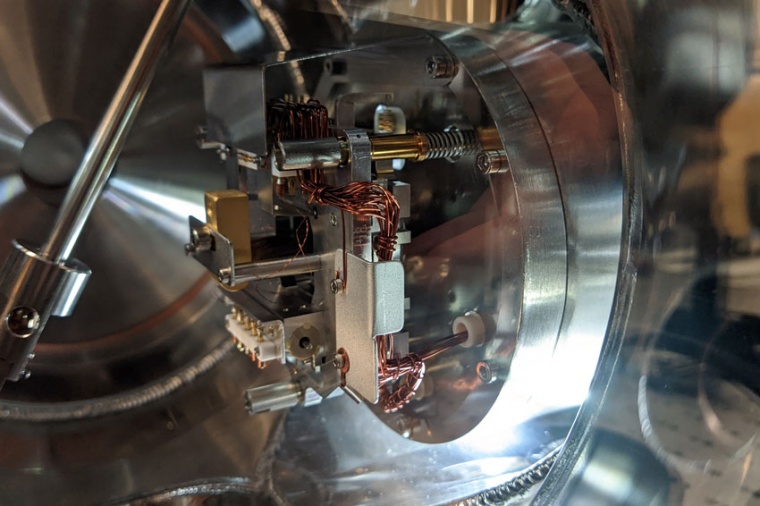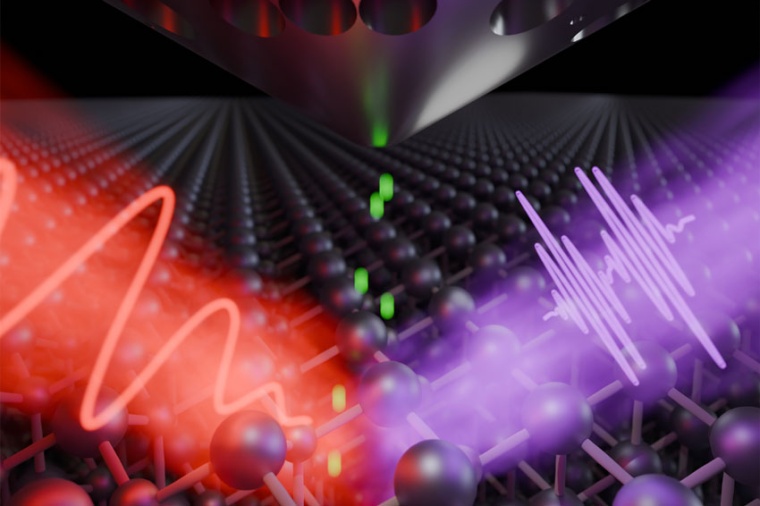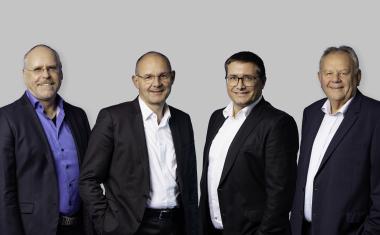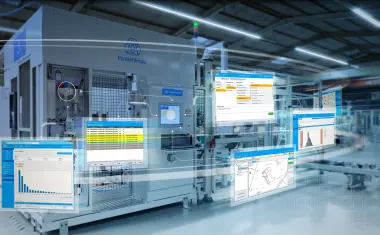Investigating electron dynamics using ultrashort light pulses
Using a laser, researchers tracked the dynamics of electrons released from the surface of zinc oxide crystals with spatial resolution in the nanometer range and at previously unattained temporal resolution.
When electrons move within a molecule or semiconductor, this occurs on unimaginably short time scales. A Swedish-German team including professor Anne L’Huillier, one of last year’s three Nobel laureates in physics, has now made significant progress towards a better understanding of these ultrafast processes.


In their experiments, the research team combined a special type of electron microscopy known as photoemission electron microscopy (PEEM) with attosecond physics technology. The scientists use extremely short-duration light pulses to excite electrons and record their subsequent behaviour. “The process is much like a flash capturing a fast movement in photography,” explained Dr Jan Vogelsang from the University of Oldenburg.
As the team reports, similar experiments had so far failed to attain the temporal accuracy required to track the electrons’ motion. The tiny elementary particles whizz around much faster than the larger and heavier atomic nuclei. In the present study, however, the scientists were able to combine the two technologically demanding techniques, photoemission electron microscopy and attosecond microscopy, without compromising either the spatial or temporal resolution. “We have now finally reached the point where we can use attosecond pulses to investigate in detail the interaction of light and matter at the atomic level and in nanostructures,” said Vogelsang.
One factor which made this progress possible was the use of a light source that generates a particularly high quantity of attosecond flashes per second – in this case 200,000 light pulses per second. Each flash released on average one electron from the surface of the crystal, allowing the researchers to study their behaviour without them influencing each other. “The more pulses per second you generate, the easier it is to extract a small measurement signal from a dataset,” explained the physicist.
Anne L’Huillier’s laboratory at Lund University, Sweden, where the experiments for the present study were carried out, is one of the few research laboratories worldwide that has the technological equipment required for such experiments. Vogelsang, who was a postdoctoral researcher at Lund University from 2017 to 2020, is currently in the process of setting up a similar experimental laboratory at the University of Oldenburg as head of the attosecond microscopy research group. In the future, the two teams plan to continue their investigations and explore the behavior of electrons in various materials and nanostructures.
Reference: J. Vogelsang, et al.: Time-resolved photoemission electron microscopy on a ZnO surface using an extreme ultraviolet attosecond pulse pair, Adv. Phys. Res. (2023); DOI: 10.1002/apxr.202300122
Further reading: The Nobel Prize in Physics 2023 – Pierre Agostini, Ferenc Krausz, and Anne L’Huillier are awarded “for experimental methods that generate attosecond pulses of light for the study of electron dynamics in matter”, wileyindustrynews.com, 03 October 2023
Company
Carl von Ossietzky Universität OldenburgAmmerländer Heerstr. 114-118
26129 Oldenburg
Germany
most read

SEW-Eurodrive and TTTech Digital Solutions enter into partnership
The aim of the collaboration is to integrate SEW-Eurodrive's axis and drive systems into the Ubique automation platform.

Agile Robots takes over Thyssenkrupp Automation Engineering
This acquisition is intended to strengthen Agile Robots' market position in the field of smart automation solutions

Laser Components: customized laser optics since 1986
Laser Components began coating individual laser optics almost 40 years ago. These are used in laser processes in numerous industries, including medicine, defense and aerospace.

Electrical and digital industry calls for strategy for Europe's digital sovereignty
The French and German electrical and digital industry associations, FIEEC and ZVEI, are calling for a proactive strategy for Europe's digital sovereignty.

Teledyne Vision Solutions: Camera manufacturer unifies machine vision portfolio
Teledyne combines the various machine vision technologies, including 1D, 2D and 3D cameras, under the umbrella of "Teledyne Vision Solutions".






